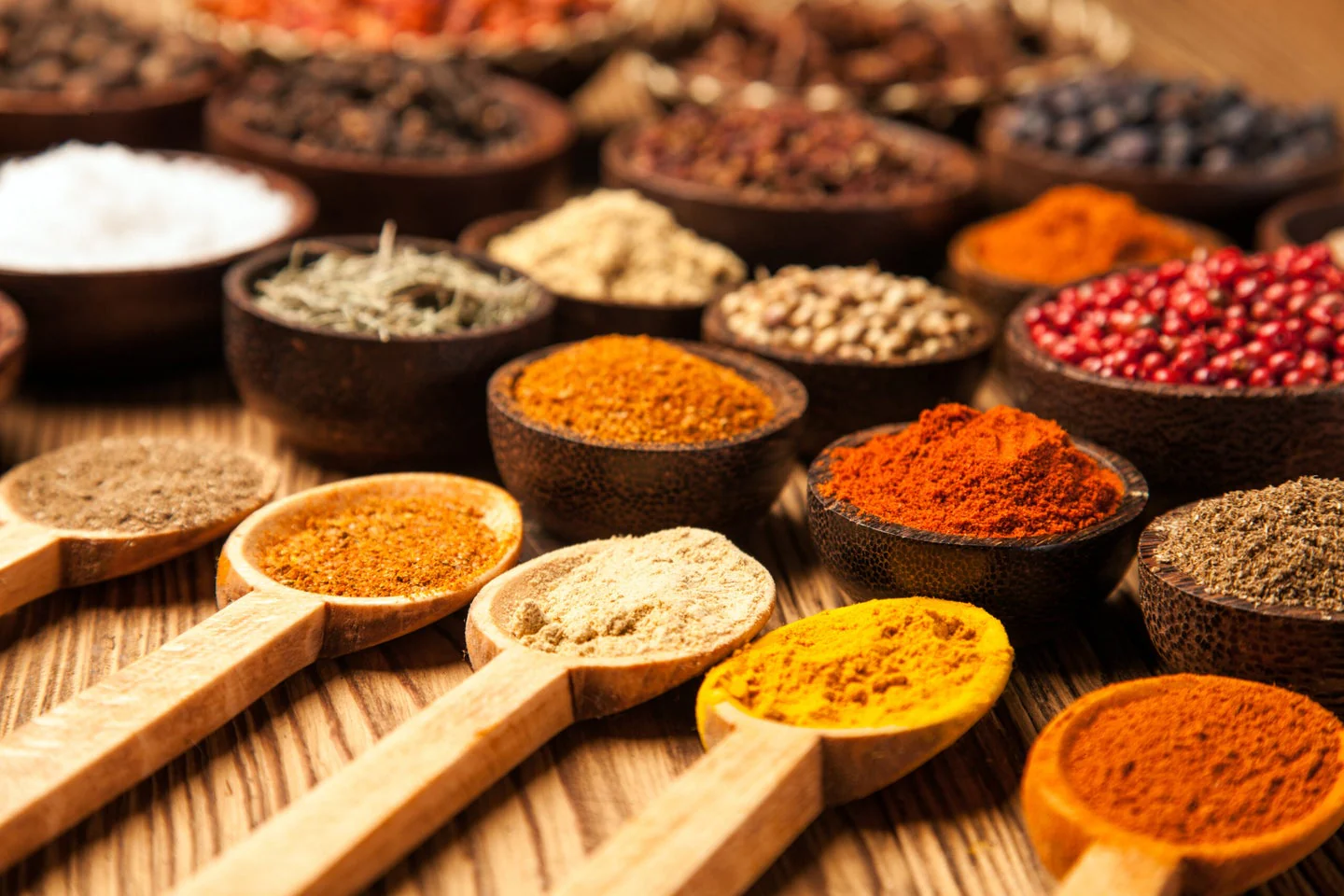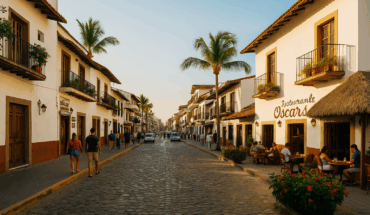Colombian spices deliver a unique culinary experience in Latin America. Mexican cuisine bears little resemblance to Colombian food. Many people wrongly assume all Latin American dishes pack heat. Colombian palates remain quite sensitive to spicy food, and their traditional dishes rarely contain hot peppers.
Colombian cuisine masters complex flavors through herbs, vegetables, and refined cooking techniques instead of heat. Native ingredients such as corn, potatoes, beans, cassava, and tomatoes are the foundations of this distinctive cuisine. Rice came later, along with chicken, pork, and beef brought by Spanish conquerors. This perfect fusion of indigenous and European influences shapes modern Colombian cooking. La bandeja paisa stands out as a regional specialty that centers on beans. These basic ingredients turn into extraordinary meals with the right spices.
This piece introduces you to Colombian spices and herbs that make this cuisine special. The bright orange achiote (annatto) adds vivid color to dishes. The Andean region’s native guascas herb brings its own distinctive flavor. You’ll discover everything about these flavors that create Colombia’s remarkable dishes.

The Role of Spices in Colombian Cooking
Spices are the foundations of Colombian cuisine that have shaped a unique food identity through centuries. Colombian spices tell a rich story of cultural heritage, geographical diversity, and culinary creativity that makes this cuisine unique in Latin America.
Why spices matter in Colombian food
Colombian food spices create depth without overpowering the palate. Bold and complex flavors define Colombian cuisine with its focus on fresh, local ingredients. These spices don’t just make dishes better—they completely change them.
Colombian cooks combine specific herbs and spices to create their signature flavors. To name just one example, see hogao, a basic Colombian sauce that blends tomatoes, onions, garlic, and cumin to create a rich, savory base for many dishes. This sauce shows how spices used in Colombian cooking build flavor layers rather than just season food.
On top of that, herbs play a vital role in Colombian cuisine. Cilantro remains a Colombian favorite in countless recipes. Parsley, guascas (known locally as “potato weed”), and chives are other common herbs that give Colombian dishes their unique character.
Is Colombian food spicy?
Colombian food packs rich flavors but isn’t spicy at all. In stark comparison to what visitors might expect, Colombians have a low tolerance for anything spicy and rarely use hot peppers in their traditional dishes. This stands out as one of the most common myths about typical Colombian food.
In spite of that, the cuisine bursts with flavor. Rather than using heat, Colombian cooking creates complexity through herbs, vegetables, and cooking methods. Cooks focus on natural flavors and balanced taste profiles that showcase quality ingredients.
Of course, some regions cook differently. The Caribbean coast uses aji peppers for mild heat, but the spiciness stays subtle and balanced. A popular Colombian saying states, “The spice is in the sauce”—meaning diners can add optional condiments like aji sauce based on their taste.
How Colombian spices differ from Mexican spices
Colombian food vs Mexican food shows one of Latin America’s biggest culinary contrasts. These cuisines take different approaches to spices. Mexican dishes include spicy ingredients almost everywhere, while Colombian cooking uses vegetables and herbs for flavor.
Chiles define Mexican culinary identity, with many types adding both heat and flavor. Colombian cooks take a different path to create depth. This key difference often catches travelers off guard when they expect similar tastes across Latin America.
Black pepper plays a big role in Colombian cooking—not for heat but to balance flavors and bring out the natural sweetness of corn and plantains. Cumin creates a warm, earthy base for many Colombian dishes.
The line between these cuisines has started to blur. Global travel has made Mexican, Peruvian, and Indian flavors more accessible to Colombians, who are slowly warming up to spicier foods. Still, traditional Colombian cooking keeps its unique, milder character that sets it apart from other Latin American cuisines.
Essential Colombian Spices and Herbs
Colombian cuisine shines through its unique blend of herbs and spices that create rich, complex flavors without too much heat. My culinary adventures in Colombia taught me that knowing these simple ingredients lets anyone cook authentic Colombian cooking at home.
Achiote (Annatto)
Achiote, or annatto, works as a natural food coloring and adds flavor to Colombian food spices. This bright red-orange spice comes from the seeds of the tropical Bixa orellana tree that grows in Latin America. Colombian cooks love achiote because it gives their dishes a beautiful yellowish-orange color, and they often use it as a substitute for saffron.
The spice brings a subtle but distinct earthy flavor. You can find it as seeds, powder, paste, and oil. It’s a key part of Colombian guiso (a dipping sauce or salsa like sofrito). Making achiote oil at home is easy – just heat the seeds in vegetable or olive oil for 2-3 minutes, strain, and store.
Cumin
Every Colombian spice collection needs cumin. This warm, earthy spice shows up everywhere in Colombian kitchens. It’s the foundation of many dishes. Colombian cooks mix cumin with onion and garlic to start their stews, sauces, and other savory dishes.
Cumin’s versatility makes it perfect for meat marinades and bean dishes. During my travels through Colombia, I saw how local cooks paired cumin with cilantro to create their signature taste.
Guascas
Guascas (Galinsoga parviflora) might be the most distinctly Colombian herb, yet few people outside the country know about it. This special herb gives Colombia’s famous ajiaco soup its unique character. The mild, earthy flavor with hints of nuts and artichoke creates a taste you can’t find anywhere else.
Most cooks use dried guascas instead of fresh, and they add it near the end of cooking to keep its delicate flavor. Latin American specialty stores and online shops now sell this essential herb, though it’s still hard to find outside Colombia.
Cilantro
Cilantro might be the most cherished herb in Colombian cooking. Many Colombians say “a Colombian kitchen isn’t complete without this delicious herb”. Its bright flavor shows up in everything from soups to rice dishes.
Cilantro plays such a big role that Colombians use it “for almost everything”. The herb creates strong reactions – people either love it or hate it because of their genetic makeup.
Allspice
South American native allspice has been part of Colombian food since before colonial times. Its taste combines clove, cinnamon, and nutmeg with sweet undertones, making it great for both sweet and savory dishes.
Black Pepper
Black pepper has a special place among Colombian food spices. Instead of using it for heat, Colombian cooks use black pepper to balance flavors and bring out the natural sweetness in corn and plantains.
Cinnamon
Colombian cooking features cinnamon in both sweet and savory dishes. People know it from desserts like natilla (custard), but it also adds complex flavor to savory foods.
Sazón
Modern Colombian food often includes sazón. This spice blend usually contains garlic powder, cumin, achiote, and other spices. Many home cooks now reach for commercial sazón products like Sazón Goya to get consistent results.
Making sazón at home gives you control over ingredients and helps avoid additives in store-bought versions. A simple homemade Colombian spice mixture might include ground achiote, cumin, and other spices.
How These Spices Are Used in Typical Colombian Dishes
Learning about Colombian food shows how spices can change simple ingredients into amazing dishes. My travels through Colombia taught me that knowing how these spices work in traditional recipes helps create authentic flavors at home.
Ajiaco and the importance of guascas
Ajiaco Bogotano is Colombia’s most beloved soup, thanks to one special herb: guascas. This herb creates the soup’s unique character with its artichoke-like undertones. The recipe calls for chicken, corn, and three types of potatoes simmered together. Cooks add guascas near the end to keep its subtle flavor. Each bowl comes with capers and heavy cream on the side, so people can adjust the taste they want. While some non-Colombian recipes try to use bay leaves instead, locals say nothing can replace the real guascas.
Arroz con coco and cinnamon
Arroz con coco shows how cinnamon can raise simple ingredients to new heights. This coastal coconut rice starts when you cook coconut milk until the water disappears and the solids turn brown. This creates a rich, nutty base that colors the rice coffee-brown. Cinnamon plays a vital role in balancing sweetness, often mixed with panella (Colombian raw sugar) or brown sugar. Colombian coconut rice stands out from other versions with its savory-sweet taste and crunchy bits of crisp coconut meat. The coconut flavor is more subtle than Thai versions.
Empanadas and aji sauce
Colombian empanadas need aji sauce. This sauce is so important that Colombians always keep it in their fridge. Each family has its own recipe that usually has:
- Hot peppers (traditionally aji pajarito or habanero)
- Fresh cilantro and parsley
- Lime juice and vinegar
- Chopped scallions and tomatoes
This bright, tangy sauce balances the empanadas’ richness and adds herbal flavors. Aji makes soups, stews, and grilled meats taste better. You can make the sauce mild or spicy based on what you like.
Arepas and cheese pairings
Arepas are the life-blood of daily eating in Colombia. These cornmeal patties work for everything from breakfast to dinner sides. The cheese-stuffed version (arepas de queso) uses melted mozzarella, queso fresco, or Jarlsberg inside crispy golden shells. I first tried these in La Calera and got squirted with hot cheese that was “worth the burn” because it tasted so good. Most Colombians eat their breakfast arepas with butter and extra cheese, often with hot chocolate.
Soups and stews with cumin and cilantro
Cumin and cilantro are the foundations of many Colombian soups and stews. Sancocho, a rich stew from the Antioquia region, blends these spices with potatoes, yuca, corn, and chicken. Cooks start the broth by mixing cilantro with scallions, garlic, and cumin. Caldo de costilla (rib broth) uses this same mix to create a perfect morning meal. Most recipes use cilantro twice – once while cooking and again fresh on top just before serving.
Where to Find Colombian Spices
Getting your hands on authentic Colombian spices feels like a treasure hunt when you’re outside Colombia. The good news? These key ingredients are now more available worldwide as people embrace diverse cuisines.
Latin American grocery stores
Your local Latin American grocery stores remain the best spots to find authentic Colombian food spices. These stores create a deep emotional connection with shoppers. A Colombian customer put it perfectly: “I go to the closest Latin market and crazy or not, I go to the Colombian food aisle and feel like I am home”. The stores in neighborhoods with large Latin American communities stock more genuine products.
Standard supermarkets might surprise you with their selections. You’ll often find ground Annatto (Achiote molido) in their ethnic food sections. Canadian shoppers have spotted Triguisar and other Colombian products at chain stores like NO FRILLS in Ontario.

Online spice retailers
The rise of e-commerce has made Colombian herbs and spices easy to buy. Amazon, Walmart, and specialty shops offer plenty of choices. Online shopping works great for finding specific Colombian brands.
Penzys spices stocks Colombian seasonings in their stores and website. Specialty sites like Amigofoods help you find traditional Colombian products through Amazon links. This helps people who live far from Latin American communities.
Substitutes for hard-to-find ingredients
Sometimes your search might not pan out. One food writer shared: “I have spent many an afternoon searching local Latin American markets for fresh or dried guascas only to have to order it online later”.
Here are some alternatives when you need them:
- For guascas: crushed bay leaves, dried parsley, dried oregano, or mix them with a bit of dried mint
- For annatto/achiote: use equal amounts of turmeric or a pinch of saffron; or try 1 part turmeric and 2 parts paprika for a touch of heat
These options make authentic Colombian cooking possible right in your kitchen.
Tips for Cooking with Colombian Spices at Home
Learning to use Colombian spices at home comes down to a few simple techniques that unlock their authentic flavors. My culinary journey through Colombia taught me valuable tips that can help turn everyday dishes into genuine Colombian delights.
Start with a basic spice blend
The foundation of Colombian food spices starts with a straightforward sazón mixture. Mix 1 tablespoon each of ground achiote (annatto), turmeric, garlic powder, ground cumin, and black pepper with 1 teaspoon of salt. This blend works great as a replacement for store-bought seasoning packets when stored in an airtight container. A more sophisticated version combines ground annatto, cumin, coriander, garlic powder, oregano powder, salt, and black pepper.
How to toast and bloom spices
The quickest way to maximize flavor is to bloom your spices used in Colombian cooking in oil instead of adding them directly to liquids. This releases oil-soluble compounds that improve the taste. Start with whole spices like cumin seeds, add ground spices next, and cook them briefly (about 30 seconds) before introducing liquid ingredients. The results are “more rounded” and “bolder” flavors compared to adding dry spices at the end.
Balancing flavors without heat
Colombian cooking builds complexity through aliños – vegetable combinations of onions, garlic, peppers, cumin, and cilantro. These mixtures create depth without adding heat. Your soups, stews, beans, and marinades will taste authentically Colombian with these combinations.
Storing spices for freshness
Colombian herbs and spices stay fresh in airtight glass or stainless steel containers when kept in cool, dark spaces (60-70°F). The kitchen’s heat sources like stoves and dishwashers can degrade spices, so store them away from these appliances and sunlight. Whole spices can last up to four years, but ground spices should be used within 1-2 years. Remember to mark your containers with purchase dates.
Summing all up
My travels in Colombia taught me something fascinating about their food – it packs amazing flavor without burning heat. The way Colombians use spices sets their cooking apart from other Latin American cuisines. Many people expect spicy dishes like Mexican food, but Colombian cooking creates depth through a beautiful mix of herbs, vegetables, and cooking methods.
Take dishes like ajiaco with its crucial guascas, or the perfect blend of coconut and cinnamon in arroz con coco. These show how Colombian cooks turn basic ingredients into something special. The spices tell stories of their heritage – a mix of native traditions, Spanish influences, and local twists.
Home cooks outside Colombia used to struggle to find authentic ingredients, but these spices are now easy to get. You can find them at Latin American markets, online shops, and even regular grocery stores, which means you can cook Colombian food almost anywhere.
Cooking with Colombian spices gives you more than just great meals. Each dish is a window into Colombian culture – from Bogotá’s warming soups to the coconut-rich dishes of the Caribbean coast. When you heat cumin in oil for sancocho or sprinkle fresh cilantro on arepas, you’re keeping Colombian cooking traditions alive.
Colombian spices show you don’t need heat to create amazing flavors. This cuisine proves how smart combinations of herbs and spices make dishes that comfort and surprise. Ready to try something new in the kitchen? Colombian flavors might be your next adventure – no passport needed, just bring your curiosity and some good spices.
Here are some FAQs about Colombian spices:
What are Colombian spices?
Colombian spices are a vibrant blend of flavors that form the foundation of traditional colombian food. The most common colombian herbs and spices include achiote, cumin, and guascas, which give dishes their distinctive taste. These spices used in colombian cooking often combine indigenous, Spanish, and African influences to create complex flavor profiles.
What is in Columbia seasoning?
Columbia seasoning typically features a mix of colombian spices like garlic powder, onion powder, cumin, and color (achiote). Many traditional colombian food spices also include oregano, paprika, and sometimes a touch of chili powder. These colombian spices and herbs come together to create the signature flavors found in dishes like bandeja paisa and sancocho.
What are common ingredients in Colombian food?
Common ingredients in colombian food include plantains, yuca, corn, and various meats alongside essential colombian herbs and spices. The spices used in colombian cooking often feature garlic, cumin, and cilantro as foundational flavors. These colombian spices and fresh ingredients combine to create hearty, flavorful dishes that vary by region.
What is the green powder that Colombians eat?
The green powder commonly used in colombian food is called “hogao en polvo,” a dehydrated version of the traditional herb-based sauce. This colombian spice blend typically contains green onions, cilantro, garlic, and sometimes guascas (a native herb). It’s one of the distinctive colombian spices and herbs used to flavor soups, stews, and rice dishes.
Do Colombians use cumin?
Yes, cumin is one of the essential spices used in colombian cooking, though typically used more sparingly than in other Latin cuisines. Among colombian spices, cumin often appears in meat dishes, beans, and some soups. The colombian food spices balance cumin with other flavors like achiote and garlic for a more nuanced taste.
What are 7 spices made of?
While not traditionally Colombian, a 7-spice blend in colombian food spices might include cumin, achiote, garlic powder, onion powder, oregano, paprika, and guascas. These colombian spices and herbs represent some of the most commonly used seasonings in the cuisine. Actual blends of spices used in colombian cooking vary by region and family tradition.
What are the ingredients in Columbia powder?
Columbia powder, a staple in colombian food, typically contains garlic powder, onion powder, cumin, achiote, and sometimes chicken bouillon. These colombian spices create an all-purpose seasoning used for meats, soups, and rice dishes. The exact blend of colombian herbs and spices varies by brand but maintains those core flavors.
What is Latino seasoning?
Latino seasoning is a broad term that often includes many colombian spices like cumin, garlic, and oregano alongside other Latin American flavors. While not specific to colombian food spices, these blends share similarities with traditional colombian herbs and spices. The spices used in colombian cooking represent just one variation of the diverse Latino seasoning spectrum.


